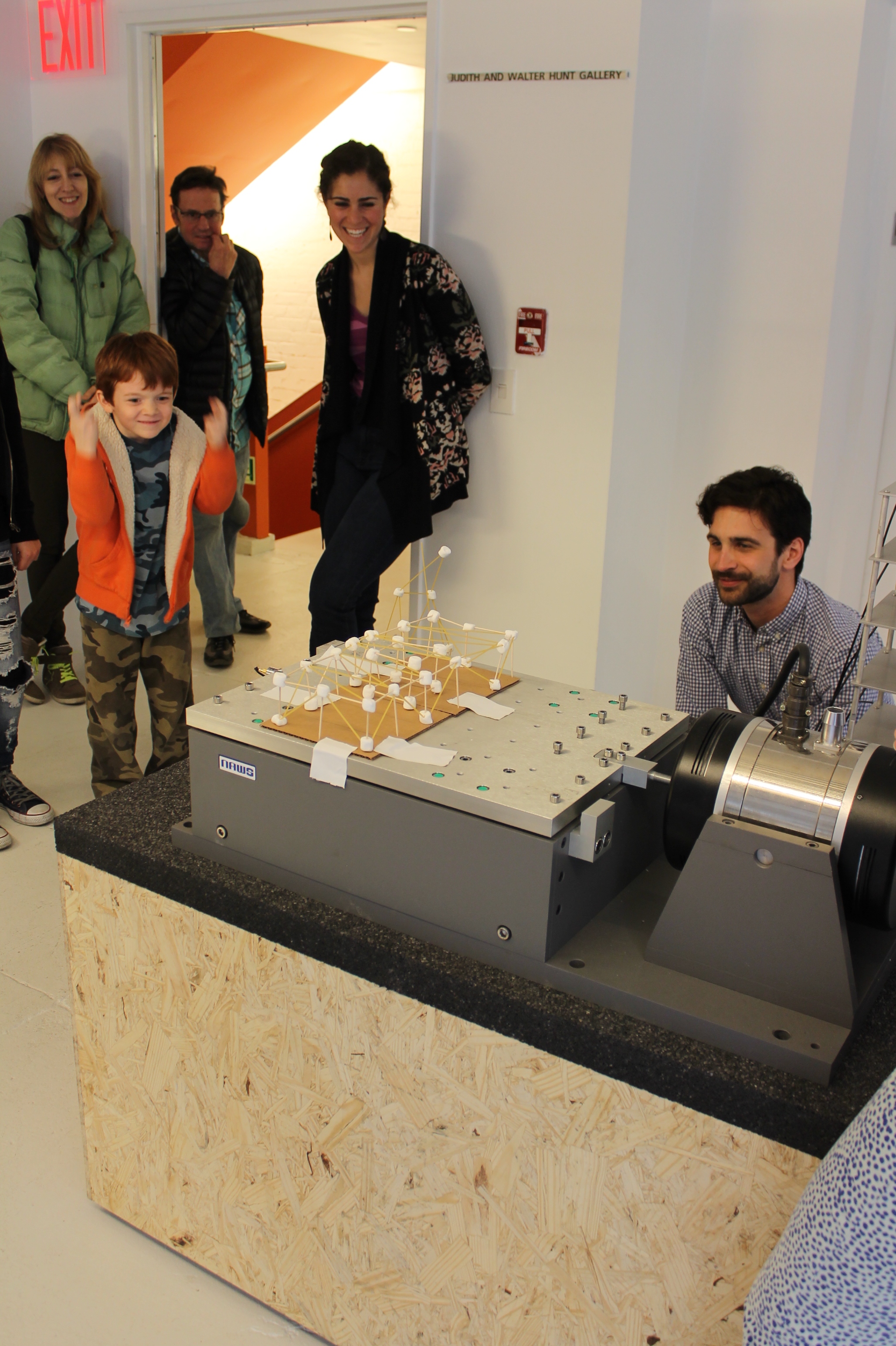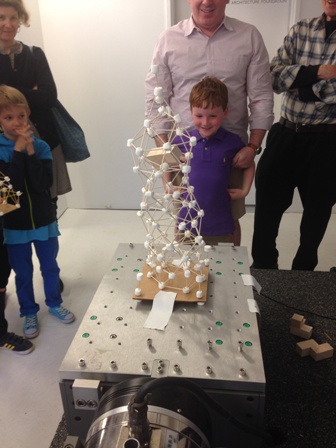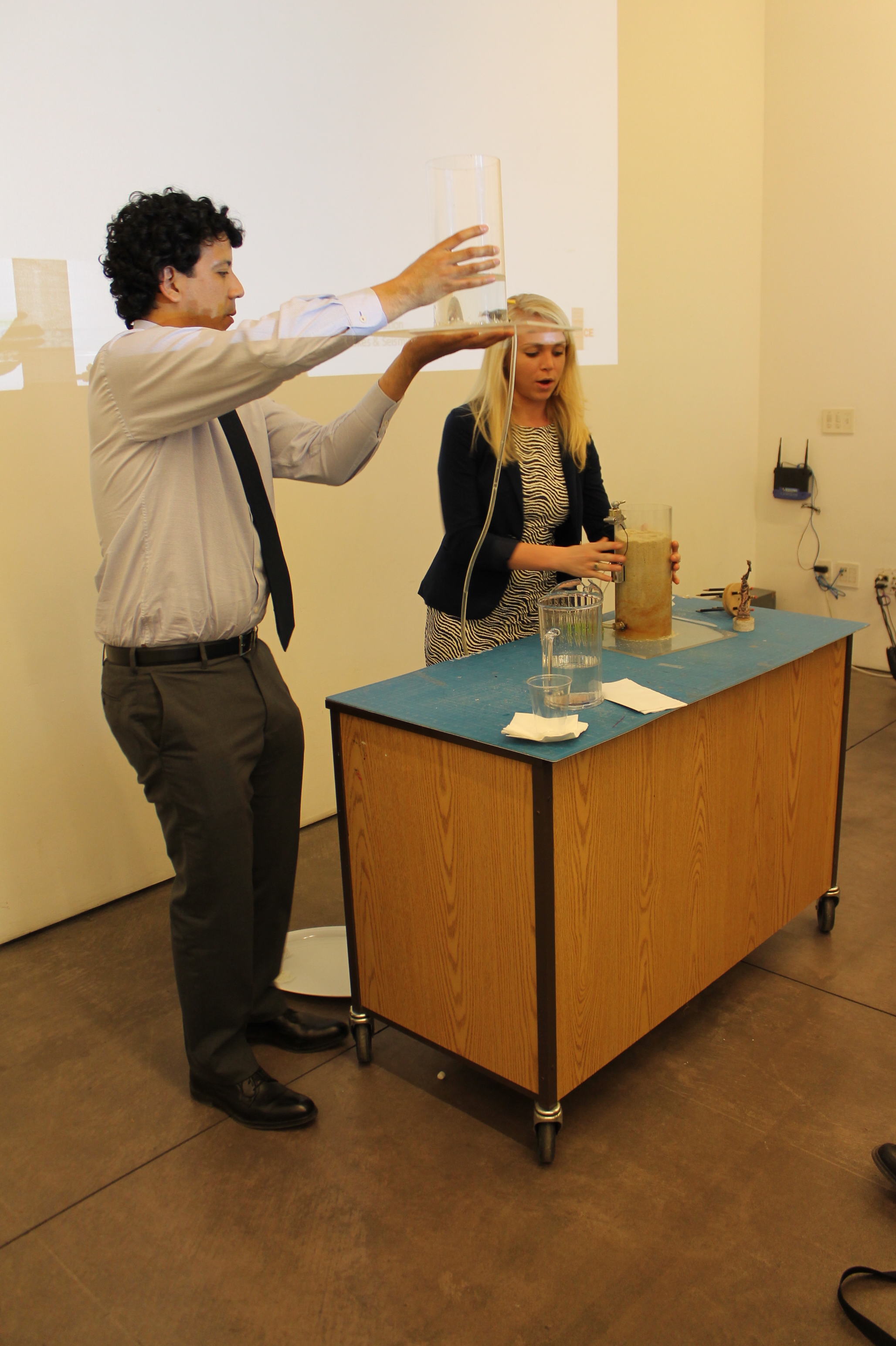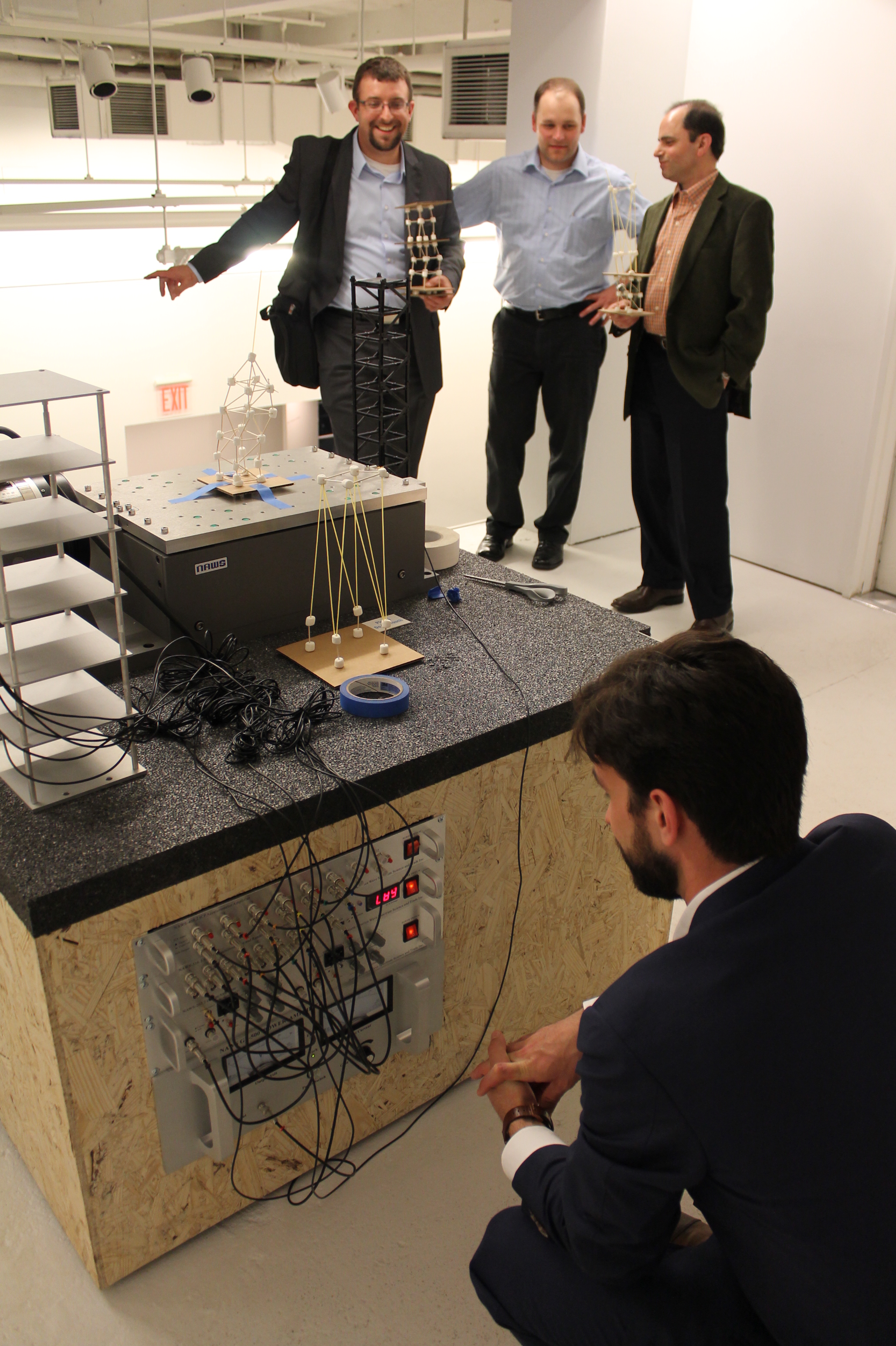by Tim Hayduk
The Center for Architecture’s exhibition, “Considering the Quake: Seismic Design on the Edge,” brings to life the architectural and structural challenges of building in earthquakes-prone areas. The Center for Architecture Foundation hosted two hands-on public programs in April for adults and families to explore how earthquakes affect our built environment. Experts from Mueser Rutledge Consulting Engineers (MRCE), a leading firm concerned with the engineering of building foundations, provided the latest fundamentals in structural design as it relates to seismic events that was quite captivating and understandable to the respective audiences.
The “Understanding Earthquakes and Seismic Design” workshop offered a fantastic introduction to what causes the earth to quake and the aftershocks that can be incredibly destructive. The audience saw a demonstration of soil liquefaction using a model that saturated sand under a heavy replica of the Statue of Liberty. A mechanism on the side of the model shook to recreate seismic waves – the statue fell over because the saturated soil could no longer support its weight.
MRCE’s Lysandra Lincoln and Menzer Pehlivan explained that New York City is not immune to earthquakes, and in many areas of the city the soil could lead to serious destruction in a large seismic event. Our understanding of earthquakes has grown incredibly over recent years. Each event, even if destructive, offers further insight into how we can design buildings to withstand earthquakes and save lives.
The highlight of each program was when participants tested their skyscraper structures on a professional shake table that is part of the “Considering the Quake” exhibition. Using toothpicks, marshmallows, and spaghetti to model structural frames of buildings, participants learned about the importance of diagonal bracing and structural dampers that can absorb some of the energy that a building experiences in a seismic event. Many models were rather resilient, so Charlie DeVore of Exponent Engineering added small wooden blocks to the structures and dialed up the frequency of the shake table to see how added weight would affect the building’s resiliency. DeVore enthusiastically shared his analysis of why certain structures were resilient and how weaker ones could be strengthened.
The Center for Architecture Foundation would like to thank everyone from MRCE and Exponent Engineering for volunteering their time and expertise. Special thanks to Felipe Lorca, Sissy Nikolaou, Alexandra Patrone, Michael Law, and others who helped make the workshops such a great success!




